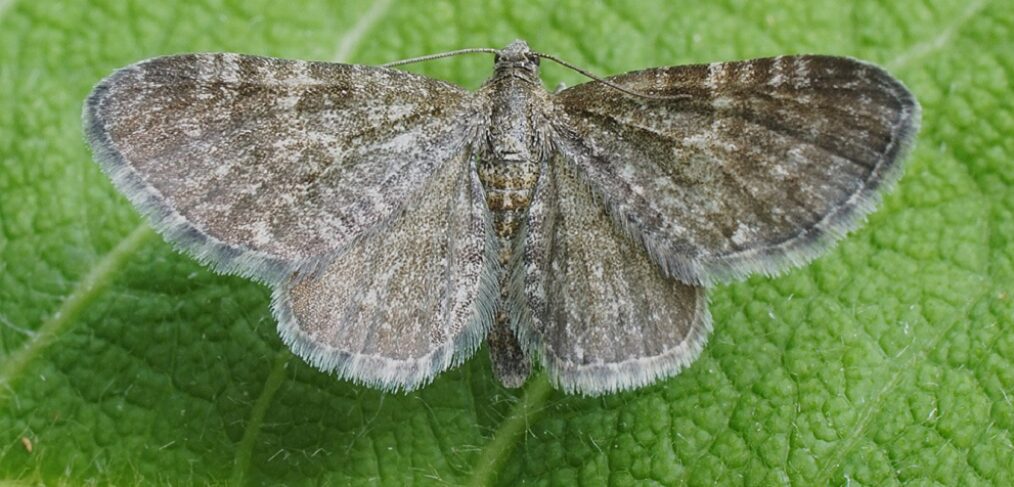
species of the week #52 – marsh pug
The marsh pu, also called the dwarf flower moth, is a really small butterfly; it is just about the size of a european two-cent coin. Another special feature is its activity pattern: it is the only Central European flower moth that is diurnal.
| Distribution status | Extinct in Rhineland-Palatinate |
| Remaining deposits | Individuals in NRW in Lower Saxony and Schleswig-Holstein, Siberia, eastern Russia, Alaska and Newfoundland |
| Last sighting in Rhineland-palatinate | 1973 near Hördt |
| Habitat | Damp, sparse forests, moors |
| Threat | climate change, peatland loss |
The marsh pug is one of the smallest native butterflies, measuring 12 to 18 mm. The wings are greyish brown to reddish brown in colour. Newly hatched specimens often show a light copper tone.
The caterpillars feed exclusively on carnation plants such as the eponymous hornwort or the bog stitchwort. Sometimes they even live in the carnation capsules. These plants prefer a very moist to boggy habitat, and a loss of bogs also leads to a loss of the plants and animals that depend on them. 75 % of European peatlands are not in good ecological condition. Peatlands are the most threatened habitat on the European Red List of Threatened Habitats. Although the pupated caterpillar of the marsh pug can overwinter up to three times, waiting a good year to develop further, its numbers are dwindling.
In Rhineland-Palatinate, several other flower moths have become extinct in addition to the marsh pug: Euphitecia selinata, Euphitecia trisignaria, Euphitecia simpliciata, Euphitecia sinuosaria and Euphitecia pauxillaria
Political necessary:
– Comprehensive protection and renaturation of peatlands.
– Research and promotion of peatland-friendly agriculture
– Ending peat cutting in Europe
To more species of the week here
Image: By Ilia Ustyantsev from Russia – Eupithecia pygmaeata – Marsh pug – Цветочная пяденица ясколковая, CC BY-SA 2.0, https://commons.wikimedia.org/w/index.php?curid=74590040
